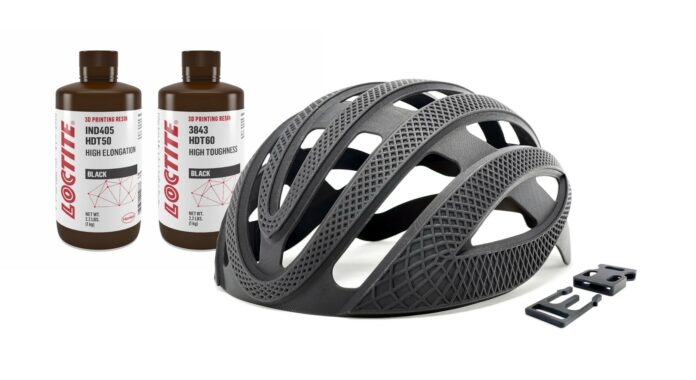OEM Desktop Metal and materials producer Henkel have strengthened their partnership to explore applications with photopolymer materials. The AM brand of Henkel, Loctite, is currently working with ETEC (previously known as EnvisionTec), on this photopolymer material development.
They have already qualified Henkel’s Loctite® 3D IND405 Black and Loctite 3D 3843 for use on the Xtreme 8K, a large DLP printer for high-volume production of end-use parts.
“A while back, I saw the Xtreme 8K before its release and knew it would excite the industrial additive space with the large build volume. I am pleased with our teams’ work to bring Loctite resins to the platform with initial workflow validations,” added Sam Bail, Head of Business Development Management and Partnerships for Loctite 3D Printing at Henkel.
A top-down DLP 3D printing approach.
As a reminder, Digital Light Processing, or DLP, utilizes the power of light from a video projector to cure liquid resins into part designs layer by layer, one quick flash at a time.
While most DLP printers feature a video projector below a build tray, where parts must be suspended hanging down from a build plate as they are printed, manufacturers interested in high-volume throughput have begun to appreciate the challenges with this approach to DLP. Extremely large parts, especially those with heavier or elastomeric properties, are difficult to suspend from a build plate. This build strategy also requires more support structures that must be removed, a challenge when processing a higher volume of parts, a press release reads.
According to Desktop Metal, a top-down manufacturing approach allows extremely heavy parts to be 3D printed on a tray in a vat with thicker viscosity materials. This simplifies throughput workflows, as parts do not require mechanical removal from the build plate. It also enables the light or energy from the projector to directly penetrate the photopolymer, eliminating the barrier of a tray that exists in bottom-up DLP printing.
The Loctite® 3D IND405 Black and Loctite 3D 3843 materials
Described as stiff, strong and durable, the two materials are ideal for a wide range of end-use manufacturing parts and consumer goods. Parts produced in IND405 have outstanding impact resistance and can be machined, tapped and polished.
Loctite 3D IND405 and 3843 are already offered in the ETEC Envision One desktop DLP printer, along with high-temperature photopolymers (Loctite 3955 HDT 280 FST, IND 147, and IND 406), elastomers (Loctite 475 and IND 402), and Loctite Med 413, a biocompatible plastic ideal for medical devices and equipment.
Now, customers will be able to print Loctite 3D IND405 and 3843 on the Xtreme 8K, which features a market-leading build area of 450 x 371 x 399 mm (17.72 x 14.61 x 15.71 in). This new combination of a trusted and popular material on an extremely large printing platform will enable users to deliver all-new sizes and throughput of parts without tooling.
“By printing Loctite 3D IND405 HDT50 High Elongation and Loctite 3D 3843 HDT60 High Toughness on the ETEC Xtreme 8K, manufacturers will be able to produce on-demand end-use parts in all-new sizes and at higher throughputs that help drive down the per-part cost. What’s more, they won’t need to pay for, or wait for, tooling to get the job done affordably”, said Ric Fulop, Founder and CEO, Desktop Metal.
Remember, you can post job opportunities in the AM Industry on 3D ADEPT Media free of charge or look for a job via our job board. Make sure to follow us on our social networks and subscribe to our weekly newsletter : Facebook, Twitter, LinkedIn & Instagram ! If you want to be featured in the next issue of our digital magazine or if you hear a story that needs to be heard, make sure you send it to contact@3dadept.com.






